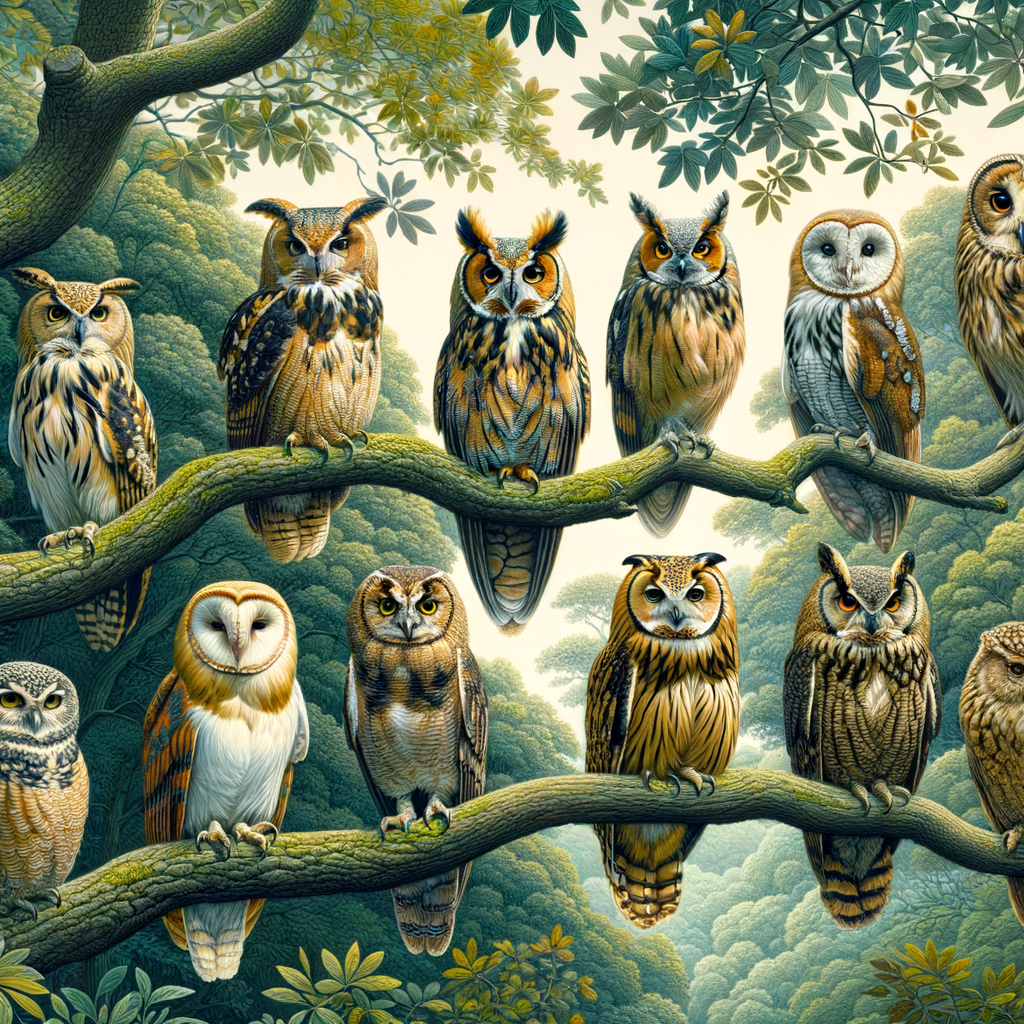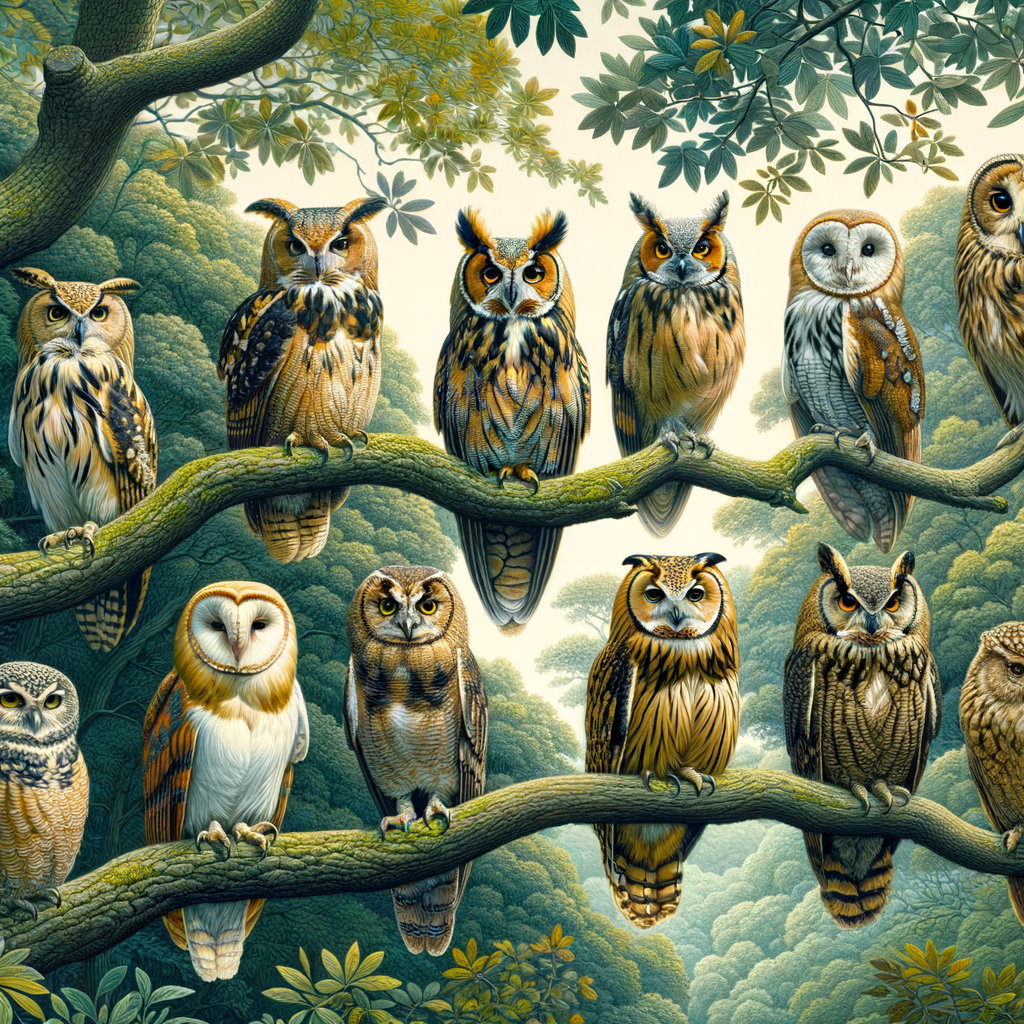
Introduction to Owl Conservation
- The concept of owl conservation: Owl conservation is about protecting owls and their habitats. It involves many actions, like saving forests, reducing pollution, and stopping illegal hunting. By doing these things, we help owls survive and thrive.
- Why is owl conservation important for future generations? Owls play a key role in our ecosystem. They help control rodent populations and keep the environment balanced. If we don’t protect them, future generations might not see these amazing birds. Also, losing owls can harm the environment. By conserving owls, we ensure a healthy planet for the future.
The Current State of Owl Population
Owl Population Decline
- Statistics on the declining owl population:According to a study by the International Union for Conservation of Nature (IUCN), over 25% of owl species are now considered at risk of extinction. For example, the Barn Owl population in North America has dropped by 50% over the past 40 years.
- Factors contributing to the decline:Several factors are contributing to the decline of owl populations:
- Habitat Loss: Deforestation and urban development are destroying the natural habitats of owls.
- Pesticides: Chemicals used in farming can poison owls and reduce their food supply.
- Climate Change: Changes in climate patterns affect the availability of prey and suitable nesting sites.
- Human Disturbance: Increased human activity in owl habitats can disrupt their breeding and feeding habits.
Endangered Owl Species
-
Overview of Endangered Owl Species
Many owl species are facing the threat of extinction. Owls like the Spotted Owl and the Barn Owl are on the endangered list. These owls are important for keeping the ecosystem balanced.
Here is a table showing some endangered owl species:
Owl Species Conservation Status Region Spotted Owl Endangered North America Forest Owlet Critically Endangered India Blakiston’s Fish Owl Endangered Russia, Japan -
Specific Threats Faced by These Species
Endangered owls face many threats. Here are some key threats:
- Habitat Loss: Deforestation and urban development destroy their homes.
- Pesticides: Chemicals used in farming can poison owls.
- Climate Change: Changes in weather patterns affect their food sources.
- Human Disturbance: Noise and light pollution can disrupt their hunting and nesting.
For example, the Spotted Owl’s population has declined due to logging in old-growth forests. Similarly, the Forest Owlet is losing its habitat to agriculture and logging.
Owl Habitat Preservation
Importance of Habitat Preservation
- Role of habitat in owl survival: Owls need specific habitats to live and hunt. These habitats provide food, shelter, and nesting sites. Without the right environment, owls struggle to find what they need to survive.
- Impact of habitat loss on owl population: When habitats are destroyed, owl populations decline. Deforestation, urban development, and pollution are major threats. For example, the Spotted Owl in North America has seen a significant drop in numbers due to logging activities.
Efforts in Habitat Preservation
-
Case Studies of Successful Habitat Preservation Initiatives
There are many successful stories of habitat preservation. One example is the Yellowstone National Park in the United States. This park has been a safe home for many species, including owls. The park’s efforts to protect and restore natural habitats have helped the owl population thrive.
Another example is the Amazon Rainforest. Various organizations work to protect this vital habitat. Their efforts include stopping deforestation and promoting sustainable land use. These actions help preserve the homes of many owl species.
-
How Individuals Can Contribute to Habitat Preservation
Everyone can help preserve owl habitats. Here are some simple ways:
- Plant Native Trees: Owls need trees for nesting and hunting. Planting native trees in your area can provide them with a safe home.
- Reduce, Reuse, Recycle: Less waste means less pollution and destruction of natural habitats. Recycling helps keep the environment clean and safe for owls.
- Support Conservation Groups: Many organizations work to protect owl habitats. Donating money or volunteering your time can make a big difference.
- Educate Others: Teaching friends and family about the importance of habitat preservation can spread awareness and encourage more people to take action.
Owl Protection Efforts
Wildlife Conservation Programs
- Overview of existing owl conservation programsThese groups create programs to save owls and their homes. For example, the Audubon Society runs projects to help owls. They teach people about owls and why they are important. Another group, the World Wildlife Fund, also helps protect owls. They work to keep forests and other owl habitats safe.
- Success stories of owl protection effortsOne great example is the recovery of the Spotted Owl. This owl was in danger because its forest home was being cut down. Thanks to conservation programs, its numbers are growing. Another success is the Barn Owl. Farmers helped by setting up nesting boxes. This gave the owls a safe place to live and raise their young.
Biodiversity Preservation and Environmental Sustainability
The Role of Owls in Biodiversity
- How owls contribute to biodiversityThey are predators that help control the population of small mammals, insects, and other birds. This balance prevents any one species from becoming too dominant, which can harm the ecosystem.
For example, barn owls eat rodents like mice and rats. Without owls, these rodents could multiply quickly and damage crops, leading to economic losses for farmers.
- Impact of owl extinction on biodiversityThe loss of these predators would lead to an increase in the populations of their prey. This imbalance can cause a ripple effect through the food chain.
For instance, more rodents could mean fewer plants, as they would be eaten more quickly. This could also affect other animals that rely on those plants for food and shelter.
| Owl Species | Prey Controlled | Impact of Extinction |
|---|---|---|
| Barn Owl | Rodents | Increase in rodent population, crop damage |
| Snowy Owl | Lemmings | Overpopulation of lemmings, habitat destruction |
| Great Horned Owl | Small mammals, birds | Imbalance in small mammal and bird populations |
Owls and Environmental Sustainability
-
How Owl Conservation Contributes to Environmental Sustainability
Owls are natural pest controllers. They eat rodents and insects that can harm crops. This helps farmers and reduces the need for chemical pesticides. For example, a single barn owl can eat up to 1,000 mice in a year. This natural pest control helps maintain the balance in ecosystems.
Additionally, protecting owl habitats means preserving forests, grasslands, and wetlands. These areas are crucial for many other species too. By saving owls, we save many other plants and animals.
-
Future Implications of Owl Conservation
If we protect owls, we also protect the ecosystems they live in. This ensures that these areas can continue to provide clean air, water, and food.
Moreover, owl conservation can inspire other conservation efforts. When people see the success of saving owls, they may be more likely to support other environmental causes.
In the long run, owl conservation helps build a sustainable future. It shows that we can live in harmony with nature and protect our planet.
Conclusion: The Future of Owl Conservation
- Recap of the Importance of Owl Conservation: Owls play a vital role in our ecosystem. They help control rodent populations and maintain a balanced food chain. Protecting owls means protecting our environment.
- Final Thoughts on the Future of Owl Conservation: The future of owl conservation depends on our actions today. By preserving habitats, supporting protection efforts, and raising awareness, we can ensure that owls continue to thrive. Together, we can make a difference for these amazing birds.
| Key Insight | Details |
|---|---|
| Role of Owls | Control rodent populations and maintain the food chain. |
| Current Threats | Habitat loss, climate change, and human activities. |
| Conservation Efforts | Habitat preservation, legal protection, and public awareness. |






